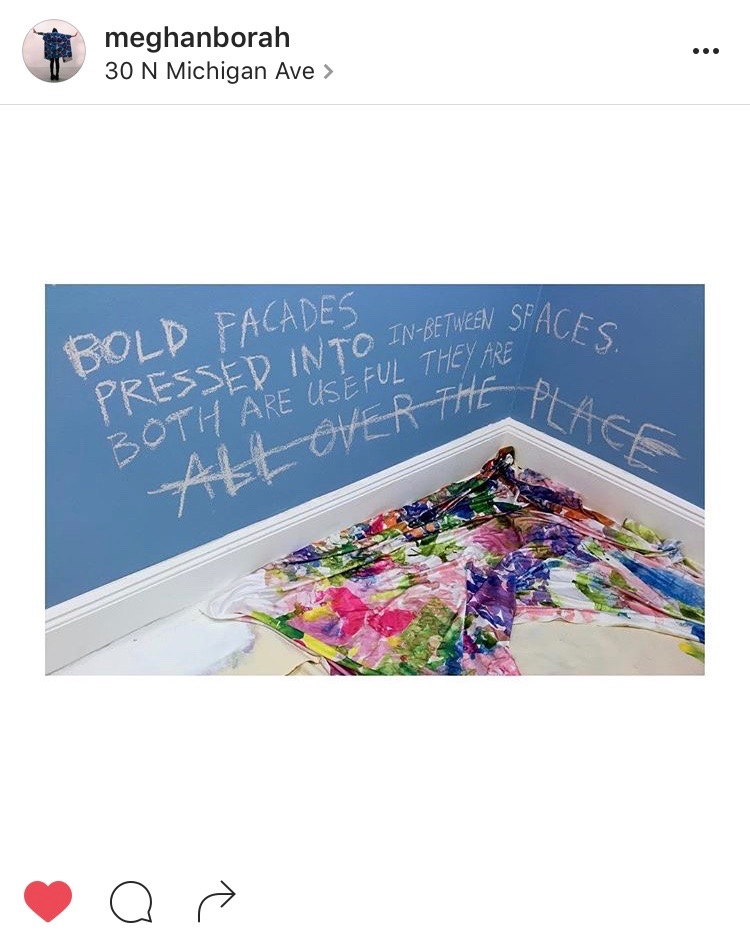NO MAN'S CHAMPAGNE REVOLUTION
Elaine Rubenoff and Meghan Borah
The Stolbun Collection Project Space Chicago
JUNE 23–JULY 7 2016
An explosion of color and patterning, All Over the Place(insert strike-through) visually overwhelms the viewer. Conceptualized as a singular painting, the walls, ceiling, floor, and the entryway are covered with textiles and canvases with vibrant floral motifs and repeated patterning, completely surrounding the viewer. While some textiles are tacked tightly, others hang loosely or even float in space, allowing movement.
Meghan Borah and Elaine Rubenoff unabashedly exploit quintessential feminine motifs. Major artists in our current consciousness, such as Mona Hatoum (at the Pompidou and Tate Modern), Pipilotti Rist (thanks to Beyoncé), and Cindy Sherman (at the Broad), create work with a cut, a bite. Although these three artists also deal with themes of femininity, they do so by relying on violence, as if that is the only way to assert themselves as serious artists. Perhaps Borah and Rubenoff, as the next generation, are working at a time when overt references to the violent or the abject are not required.
This is not to say that All Over the Place(insert strike-through) is totally saccharine—the artists demonstrate that the feminine can be imperfect, even messy. The flower panels initially appear cheery and romantic, but upon closer examination, are actually stained, blotted, splattered, bloody. Likewise, the bold and poppy figures are revealed as unsmiling and passive. The installation itself, at first whimsical, becomes visually abrasive, the patterns and colors so layered that the viewer is not allowed an optical break. Although this installation may not be violent, it posits a sort of raw melancholy that might be more emblematic of an emerging view of femininity.
Although Borah and Rubenoff’s installation strategy seems cluttered and “all over the place” with textiles haphazardly hung, it is actually carefully considered and composed. What the viewer cannot see is that these textiles and paintings cover the pre-existing exhibition held in the space, which displayed work by a male painter and two male artists working as collaborators. In a sense, Borah and Rubenoff are a combination of the previous artists—they are female painters working as collaborators—which makes them uniquely positioned to hang their work over the pre-existing show. Borah and Rubenoff’s method of hanging and layering fabrics also covers and obscures each other’s work. By embracing this vulnerability, they create a stronger, more powerful work. We, as viewers, must cover “all over the place,” to strike it through. It is All Over the Place(insert strike-through).
–Haley Berkman, Curatorial Advisor
Haley Berkman is a curator and writer. She is Curatorial Assistant at the Menil Collection, Houston. She has previously held curatorial positions at various arts organizations including the Museum of Modern Art, New York, the Dallas Museum of Art, the Museum of Fine Arts, Houston, and the Pentagram Stiftung, Venice.












